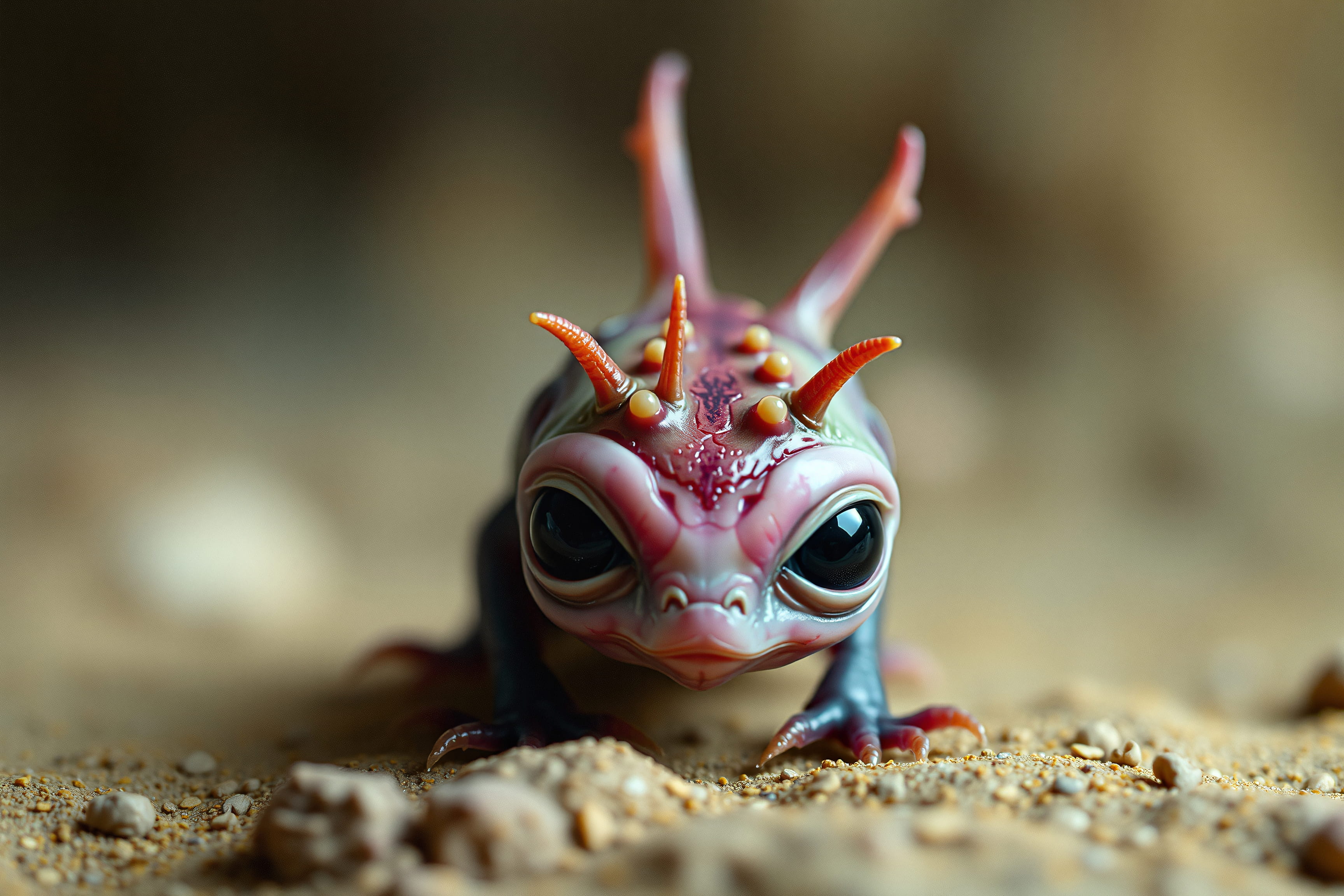
Luminis oculorum

The being depicted in the image appears to belong to an advanced extraterrestrial species, possibly classified within the genus Luminis oculorum, meaning "bright-eyed ones." This name reflects the creature's distinct features and likely adaptations to its environment.
Morphological Characteristics:
Cranial Structure: The being exhibits a broad, domed cranium with intricate ridges and patterns across the skin, possibly serving as a form of thermoregulation or as sensory organs. These features might indicate an advanced neural architecture, supporting complex cognitive functions or heightened sensory perceptions.
Eyes: The large, reflective eyes suggest an adaptation to environments with low ambient light or frequent shifts between light and darkness. These eyes likely provide a broad spectrum of vision, possibly extending into the infrared or ultraviolet ranges, allowing the being to detect heat signatures or navigate in environments with non-visible light sources.
Skin: The bright orange hue of the skin could serve multiple purposes. It may function as camouflage in a similarly colored environment, such as a planet with abundant orange-hued vegetation or minerals. Alternatively, the color might play a role in social signaling or communication within the species, with certain colors or patterns indicating mood, status, or other information. The skin's texture is smooth with subtle patterns, possibly aiding in both tactile sensation and protection from environmental factors.
Nasal and Auditory Structures: The being has a small, slightly upturned nose, suggesting a reliance on olfactory senses that are less prominent than visual or auditory ones. The ears, though not clearly visible, may be recessed into the skull, indicating a possible adaptation to environments where sound waves behave differently, such as underwater or in thick atmospheres.
Behavioral and Environmental Adaptations:
Clothing: The being is draped in soft, flowing garments that seem to be both functional and symbolic. The attire could be adapted to maintain body temperature in fluctuating climates, or it could signify rank, role, or affiliation within its society. The fabric may be woven from organic materials unique to its planet, possibly imbued with properties that aid in survival, such as temperature regulation or protection against radiation.
Communication: The creature’s large eyes and expressive facial features suggest a species that communicates heavily through visual cues, possibly augmented by bioluminescent patterns or changes in skin color. Vocal communication may be supplemented by or even secondary to these visual signals, or there may be a reliance on telepathic communication, given the species' likely advanced neural capabilities.
Hypothetical Habitat:
The Luminis oculorum species is likely native to a planet with extreme environmental conditions, such as erratic light cycles or varied terrains that require highly adaptable sensory organs. The orange skin may be an adaptation to a planet with a high amount of solar radiation, or it may help blend into an environment rich in similar hues, such as a desert or volcanic landscape.
The species' environment might be one where light plays a crucial role, either in the ecosystem or in social dynamics. This could include planets orbiting unstable stars or those with thick, changing atmospheres that alter the quality of light throughout the day or year.
Conclusion:
This being, part of the Luminis oculorum genus, appears to be a sophisticated, possibly highly intelligent species with significant adaptations to a challenging environment. The physical traits suggest a life that revolves around complex social structures, environmental awareness, and perhaps advanced technologies. The species' visual and possibly telepathic communication methods indicate a level of social interaction and culture that could be vastly different from our own, yet highly advanced in its own right.